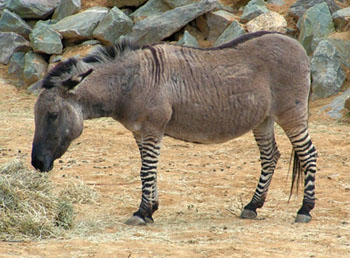 Photo: en.wikipedia.org |
During discussions with stakeholders in Kenya in 2013, a need was identified for training in conservation genetics with an African emphasis. In answer, Prof Paul Grobler from the Department of Genetics developed a short course in Applied Conservation Genetics.
Some of the phenomena studied in this field include:
• hybridisation between species such as blue wildebeest and black wildebeest,
• wildlife poaching and
• potential inbreeding in small game-farm populations.
From the onset, the course has been developed as an international venture. To this end, Dr Frank Zachos from the Natural History Museum in Vienna, Austria, committed himself to the project. Dr Jamie Roberts from the Department of Fish and Wildlife Conservation at Virginia Tech University in the USA also came on board. Both pledged their time and expertise to the course – without any financial gain.
Subsequently, our Department of Genetics presented this short course at the National Zoological Gardens (NZG) in Pretoria earlier this year. The team of presenters included Prof Grobler, Dr Zachos and Dr Roberts. They were joined by Dr Desire Dalton from the Research Division of the NZG, who added valuable practical experience to the presentations.
The course assumes a degree of prior knowledge of population and molecular genetics. A strong emphasis is placed on practical applications. The programme includes a strong component of statistics and hands-on training in the many approaches and software used in population genetics.
The group that attended the course included a contingent from the Namibian Ministry of Environment and Tourism, Dutch postgraduate students currently working at the University of Johannesburg and delegates from across South Africa.
This successful meeting followed an experimental first round of the course presented in Nairobi during 2013, attended by representatives from Kenya, Malawi, Nigeria, Mexico and Belgium.